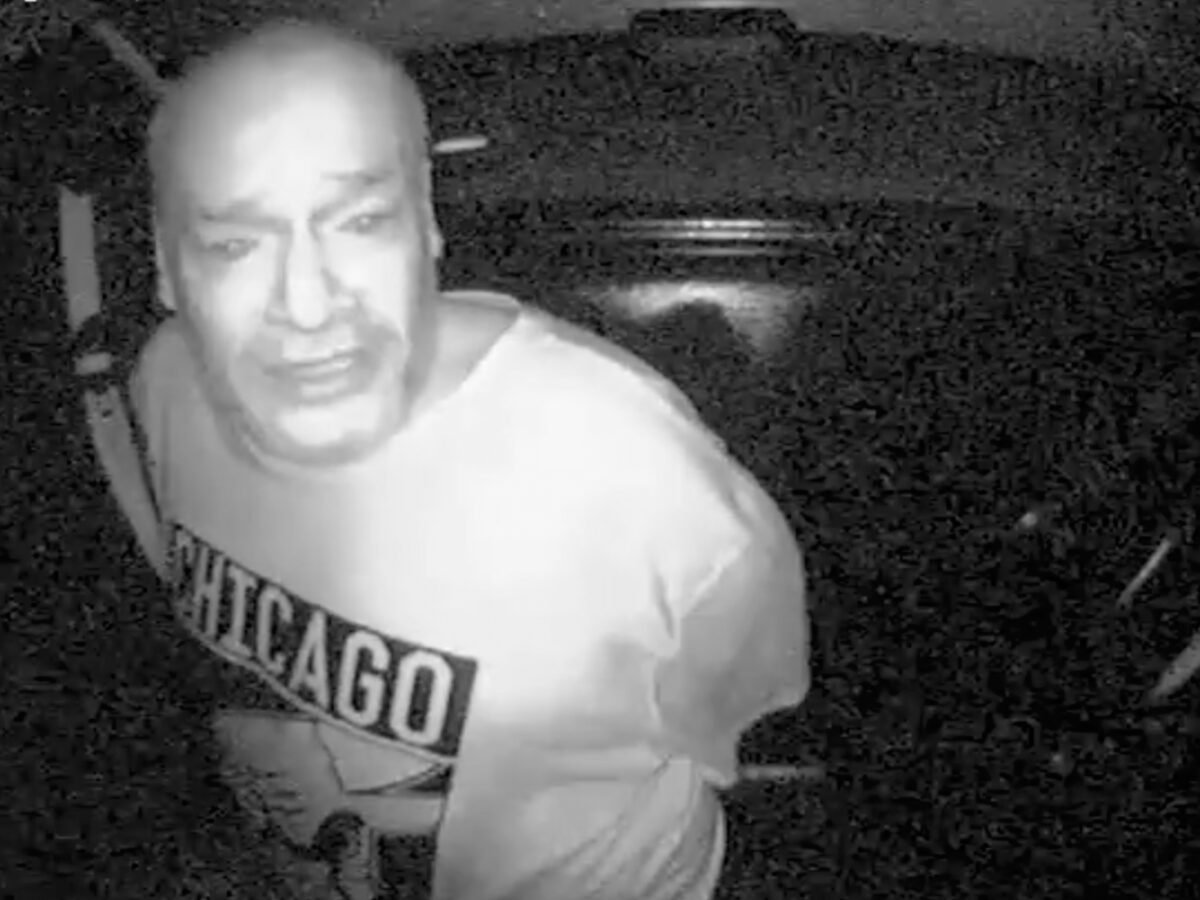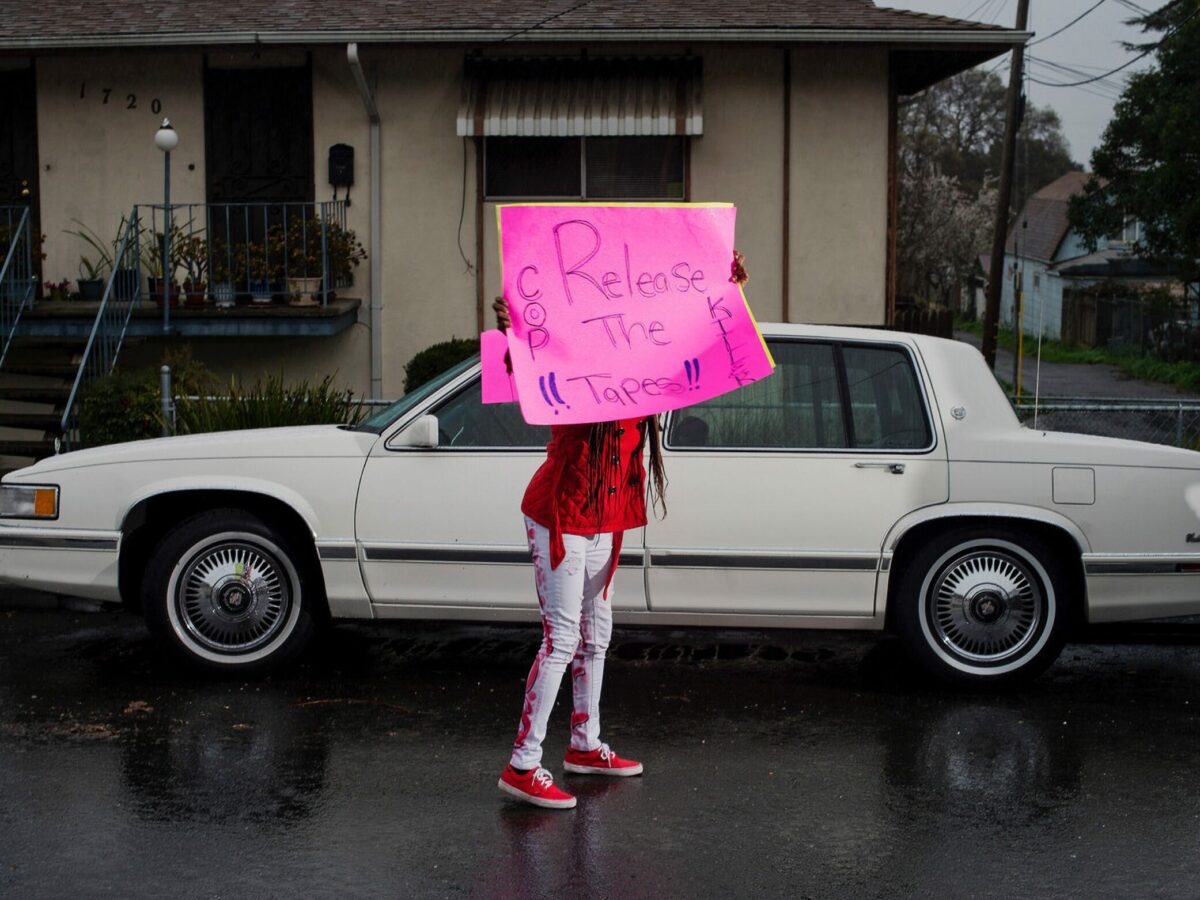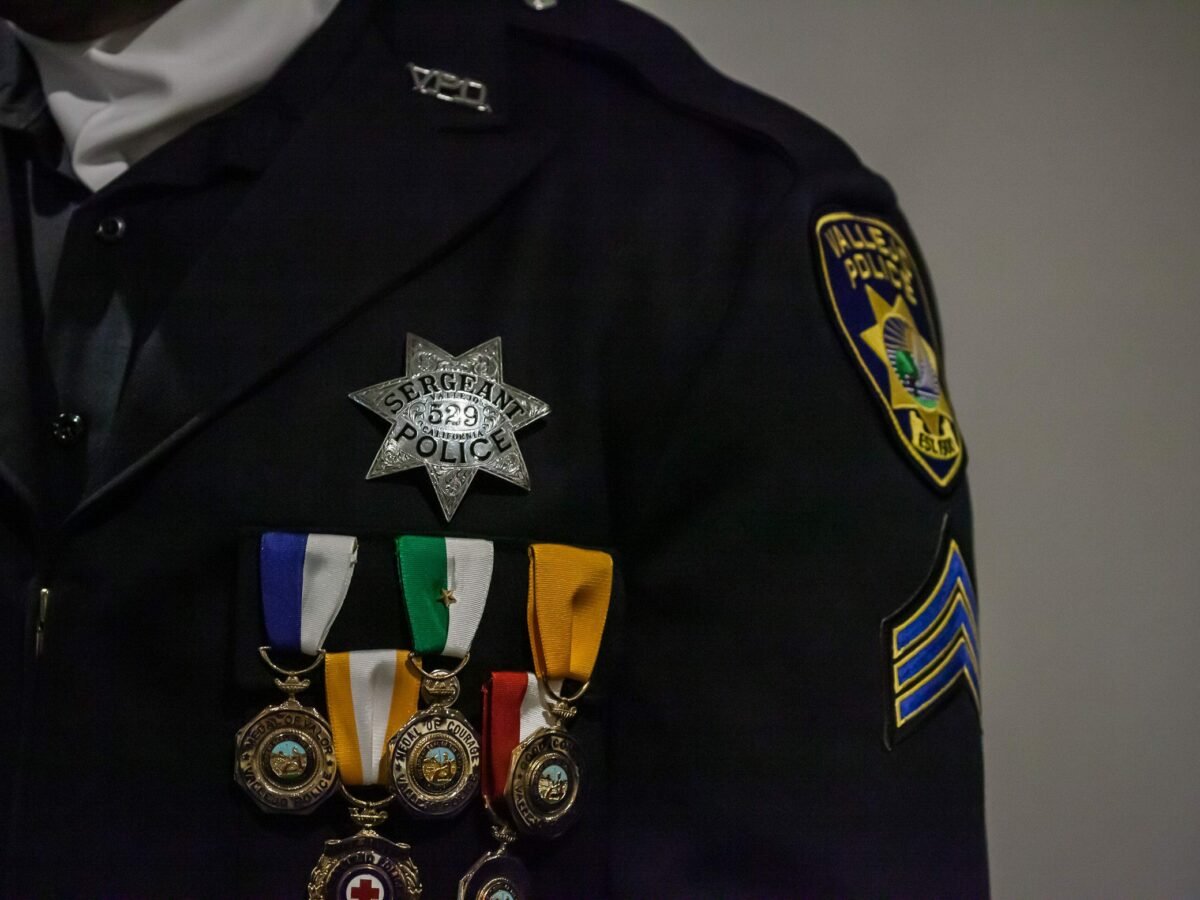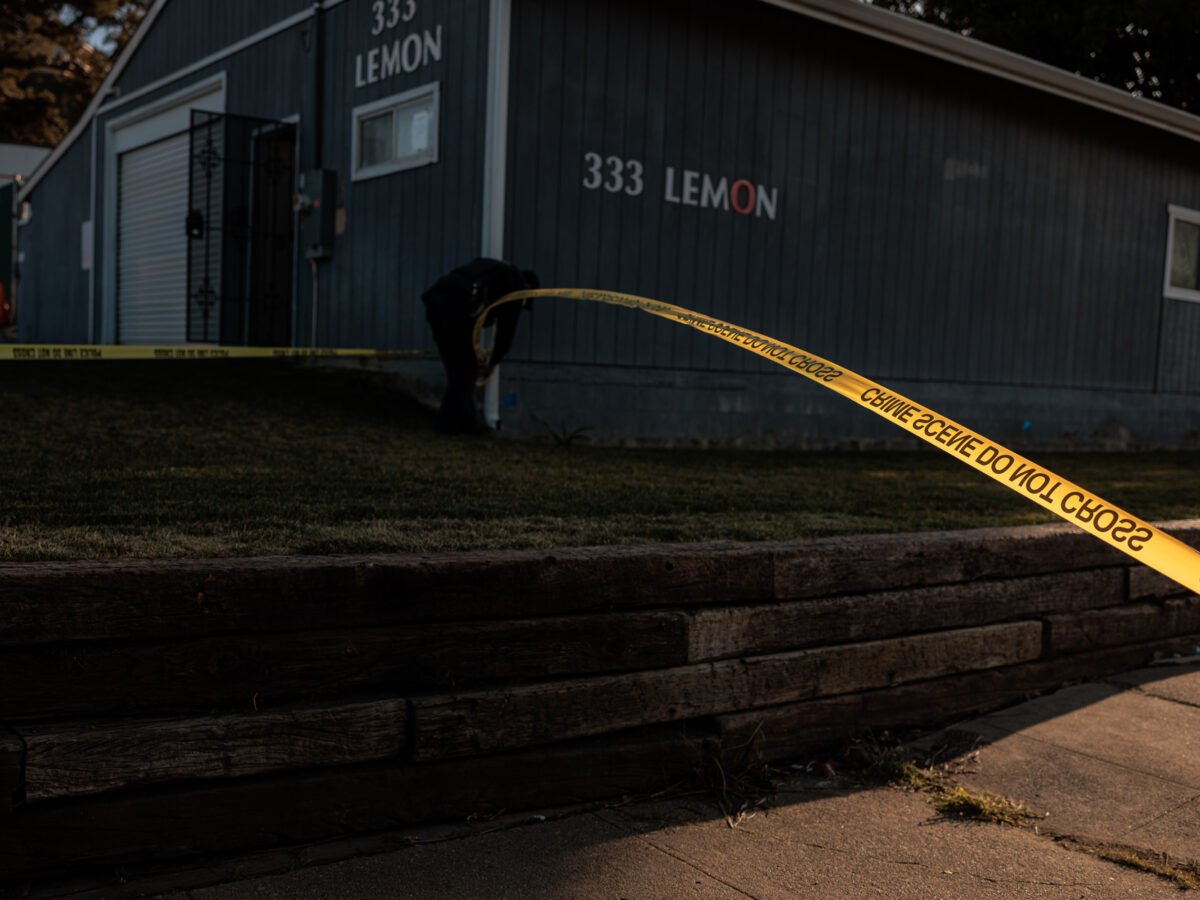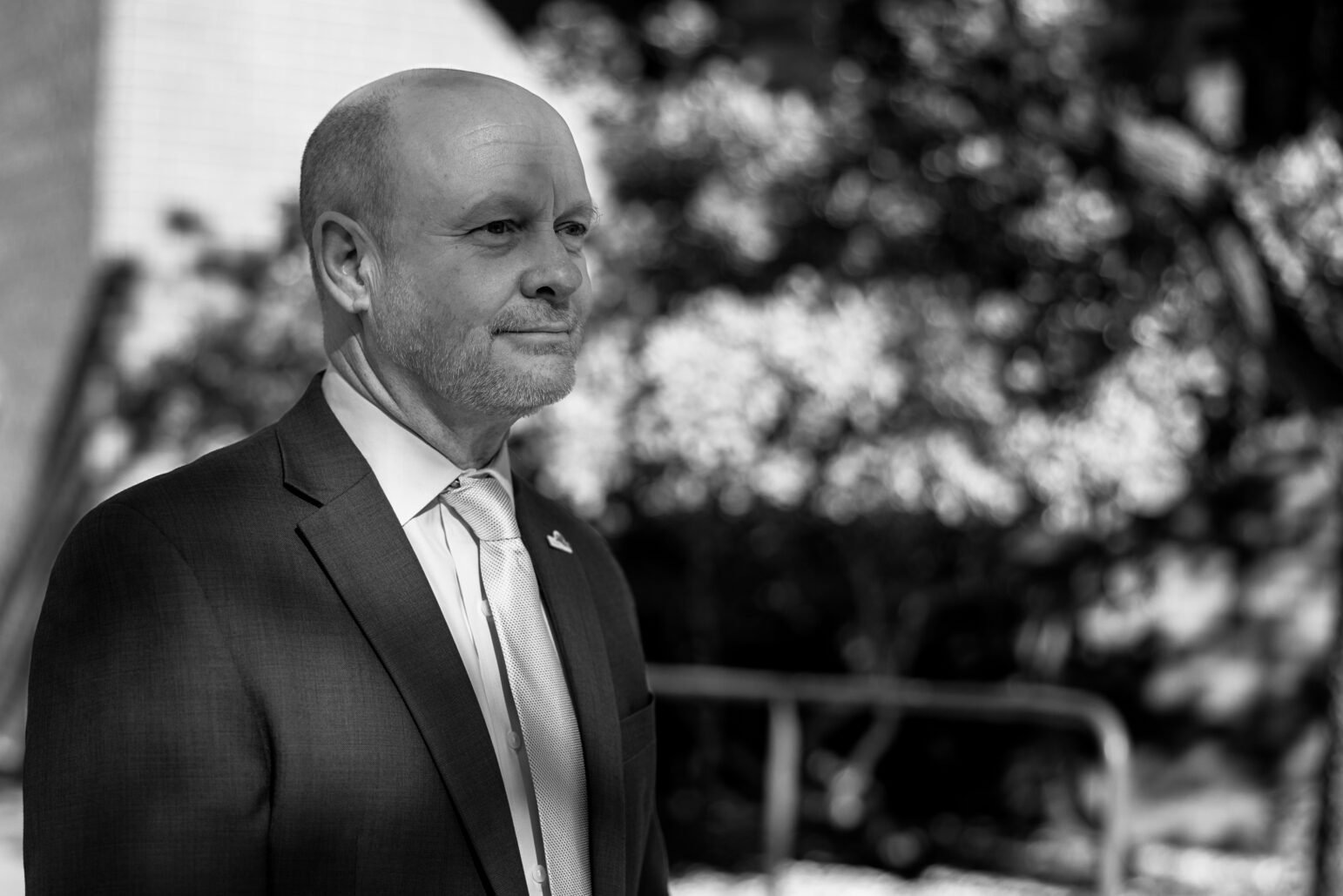
Interview by Anna Bauman. Photographs by Geoffrey King.
City Manager Andrew Murray met with Open Vallejo on Tuesday at Vallejo City Hall to discuss public safety and policing in his first sit-down interview since starting work in May.
In an early test of his leadership, Murray now faces one of his most important decisions for Vallejo: deciding who will lead the Vallejo Police Department, an agency known nationally for decades of violence and impunity, and now subject to sweeping reform plan imposed by the California Department of Justice.
Eleven community members will interview the three final police chief candidates on Friday, marking an extra step in the hiring process that Murray added in response to public uproar over the city’s failure to ensure Black representation on the first community interview panel.
In Tuesday’s interview, Open Vallejo asked Murray to address the controversies surrounding the chief recruitment process, his lack of engagement with families who have been impacted by Vallejo police violence, and a months-long delay in standing up the city’s Police Oversight and Accountability Commission. The city manager discussed his role in the police reform effort, including the city’s investment of resources, and strategies for tackling the police staffing shortage in Vallejo.
Read on for the full conversation, which has been lightly edited for clarity and concision.
Open Vallejo: Tell me a bit about how you’re thinking of this final interview with the new community panel. Obviously, you’ve already been through quite a few interviews. How will you incorporate their feedback into this decision?
Andrew Murray: In the first round of panel interviews, we had three different panels that were rating the candidates from different perspectives. We had a current and former police chief panel who were looking at the technical qualifications and experience of the candidates. We had a panel composed of other city staff, primarily department heads, to gauge their sense of how well the candidates could work with other departments. You need to be able to function within the city ecosystem by collaborating with other departments — finance, HR, city attorney, and the like. Then we had the community panel, which is really specifically intended to rate candidates based on their ability to engage with the community, create trusting relationships, and communicate effectively. So we’ve already received input from all of them.
I’m happy that we’re having a second community panel to get another round of perspectives. They’re going to be rating based on the same thing, which is the candidate’s ability to understand community issues and also a track record of successful community engagement, and their ability to communicate effectively. Each of those are layers in addition to the layers that happened before that of the preliminary screening on technical qualifications, education, and years of experience. A second community panel will provide another layer of input to me, particularly on community engagement aptitudes and experience. That’s one of the many considerations in selecting the next police chief.
Is this the final step before you make a decision? When do you expect to have a finalist chosen?
We’re expecting to choose a finalist by around mid to late November. I’ll be having additional interviews with the finalists, maybe not all of them, maybe just a subset based on the second community panel’s input. And then there are some other things we want to discuss with them, some of their other experience and aptitudes. We might ask them to do an exercise or two, provide us with samples of past work — things that are pretty common for these types of interviews.
As far as your decision to convene a second panel this week, after at first seeming a little reticent to do so, what changed your thinking on that, and what influenced you to add this extra step in the process? Did the California DOJ influence your decision in terms of any pressure or conversations that you had with them?
The thing that really influenced my decision to convene a second community panel was the input that I received from community members. That really underscored for me the significance to them, and the importance of having an additional panel that more fully represented the diversity of the community. The DOJ did provide a perspective but I did not feel in any way forced by DOJ to convene a second community panel. They just shared their perspectives on it, and I think they also amplified that they had heard from a cross-section of the community that they thought a second community panel would be worthwhile.
I really appreciated that community feedback. I found that very educational. It helped me get to know the community and its priorities in a way that will benefit me in all sorts of other decisions I’m making related to the community.
You also mentioned at that city council meeting possibly bringing in more of an official diversity, equity and inclusion work plan for the city or somebody in that role. Is that still something that’s on the table? Do you have any updates?
It is on the table. I haven’t been working on that as much as I’ve been working on some of the other top council priorities. Recently, the city council established four priorities to be my top priorities over the next few months, and so I need to focus on making sure I deliver those.
Part of that educational experience from the feedback I received regarding the community panel, illuminated for me, I think, the need for some additional DEI awareness and capacity at the city. So that is something that I will be pursuing.
I led a DEI effort in Pinole, the last city in which I worked as a city manager. The beginning of that process often is an assessment by an outside professional on where your organization stands and where your community stands, and recommendations from that group on what the next steps are. Their recommendations may include some additional permanent city staff that are dedicated to DEI and equity, they may not, I’d want to see what their recommendations are before making a decision about how to proceed.
Have you already engaged an outside group?
I have not. That would be the first step.
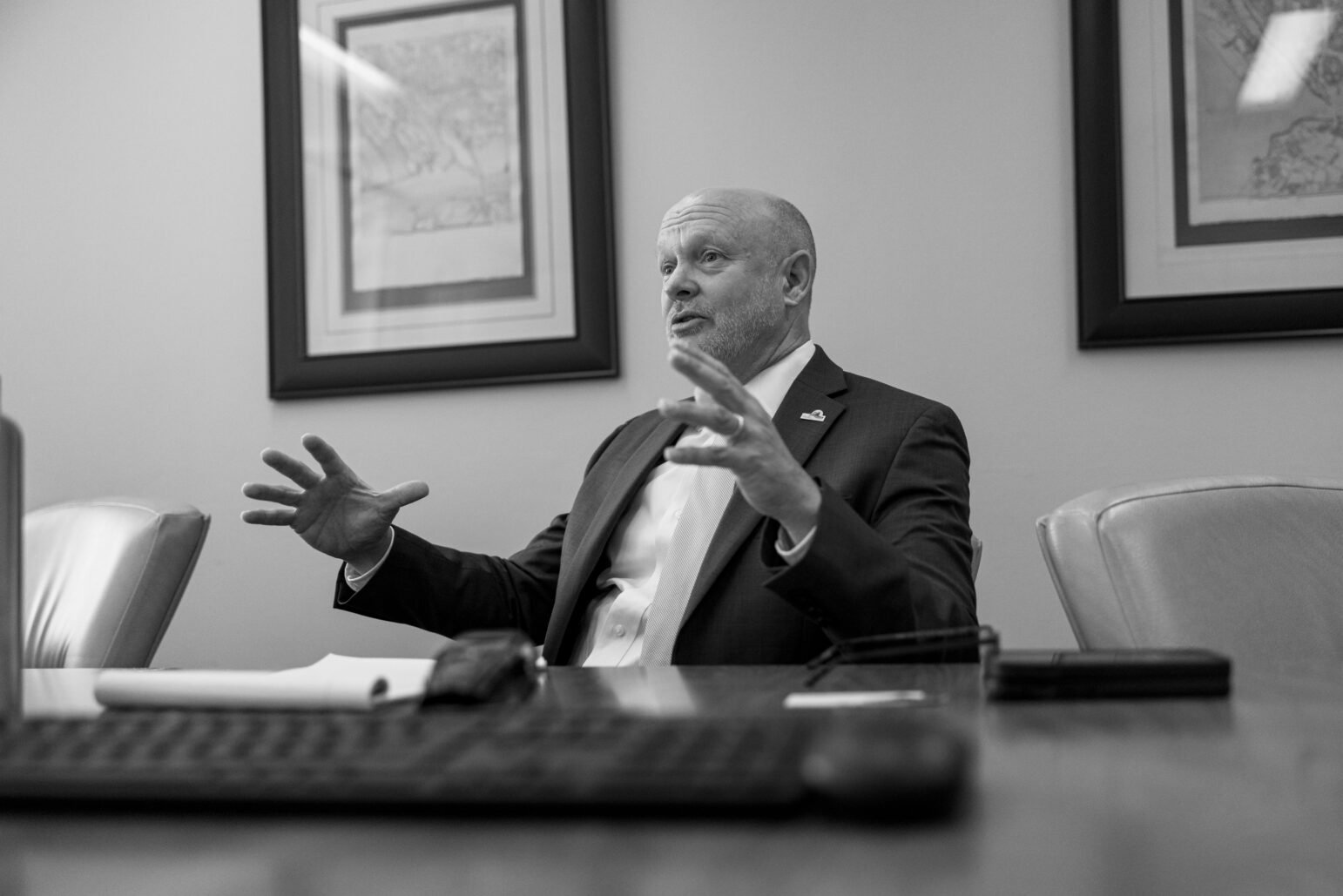
Throughout the community engagement phase of the police chief recruitment, have you talked to anyone who has lost a family member to Vallejo police violence? If so, how have those conversations impacted your perspective?
The head recruiter, Joe Gorton, and I tried to work through the ACLU to arrange a conversation or conversations with affected family members, and we were not able to agree on the logistics at the end of the day. So I have not had a conversation and I don’t believe Mr. Gorton has either.
We were trying to come to terms about whether to have attorneys present or not, which we couldn’t agree on. I think we had different perspectives about the nature and the focus of the conversation, so I think we had differences of opinion about our requirements in that regard that we couldn’t come to see eye-to-eye on.
Would that apply across the board to people who are actively in litigation and people whose cases had settled?
Yes. It really relates to the families that the ACLU was working as the facilitator to possibly arrange a discussion with, so it related to all of those families with which ACLU was in touch and had expressed some interest and willingness in having a conversation.
I wanted to ask you as well about the city’s settlement agreement with the California Department of Justice. Obviously, that work has been going on for many years before you got here. What do you see as your role in that reform process and what has that looked like so far since you’ve been in Vallejo?
I’ve been very involved in the reform effort since I’ve joined. We have biweekly coordination meetings between the city team, DOJ, and the evaluator, Jensen Hughes, which I attend. So very involved in trying to understand DOJ’s and Jensen Hughes’ objectives, and strategizing with them and the city team about how to meet those requirements. Regarding my role, I think it’s not just the responsibility of the police chief or any other one person to make sure that this is successful. It’s such a significant effort that it requires the participation of the city manager. I’m very happy to be involved in it. I think it’s very exciting work.
Everybody recognizes the need for the police department to modernize its policies and procedures. I’m very grateful that we have the technical assistance of DOJ and Jensen Hughes that provide basically a roadmap for that, so we’re not having to come up with that on our own, we’ve got these outside experts who’ve worked in many, many other communities on modernization and best practices, so I think we’re fortunate to have this roadmap to help guide us in our work.
Under the three-year collaborative reform agreement between DOJ and Vallejo, which expired last year, many of the reforms were not implemented. What are you going to do to help ensure that the settlement agreement is fully realized this time around?
I think there was a learning process for all of the parties during the initial collaborative reform effort, about how such collaboration would work, and what would be required to implement the 45 recommendations. So I think everybody has gone through that acclimation and learning process. The police department is really geared up and devoted significant resources to the new settlement agreement work.
There are still 18 items of the original 45 from the collaborative reform that need to be completed, in addition to over 80 requirements of the settlement agreement, so lots of things to do. But the police department has established a new unit to work on the settlement agreement that has five or more sworn staff members and an equal number of civilian employees, so very significant investment of resources, and at a time as you both know, when we have a shortage of police officers that could be really easily deployed in other areas. So I think that really underscores the desire of the department and the commitment of the department to get these reforms implemented. It’s a very strong investment and commitment to getting those things done.
Another piece of the reform agreement is increasing transparency and community engagement with the police department, and part of that is the Police Oversight and Accountability Commission. I understand the members were appointed to that back in March, but they have not received the training that’s required for them to really get off the ground and start meeting and doing the work. Do you have any explanation for the delay in that training?
There are a couple things. One of them is that the city has been meeting and conferring with the Vallejo Police Officers’ Association on the POAC ordinance, and I think we just concluded that. I believe that an amendment to that ordinance will be coming forward at a council meeting in November. So we’ll finally just at that time have the ordinance that lays out the marching orders and parameters for the POAC. I also think it’s frankly just been a bandwidth issue for city staff. We do need to develop an extensive amount of training for the POAC members, which has taken the city some time to assemble.
Do you expect the commission’s training to begin in November?
I would say soon after the amended ordinance is adopted.
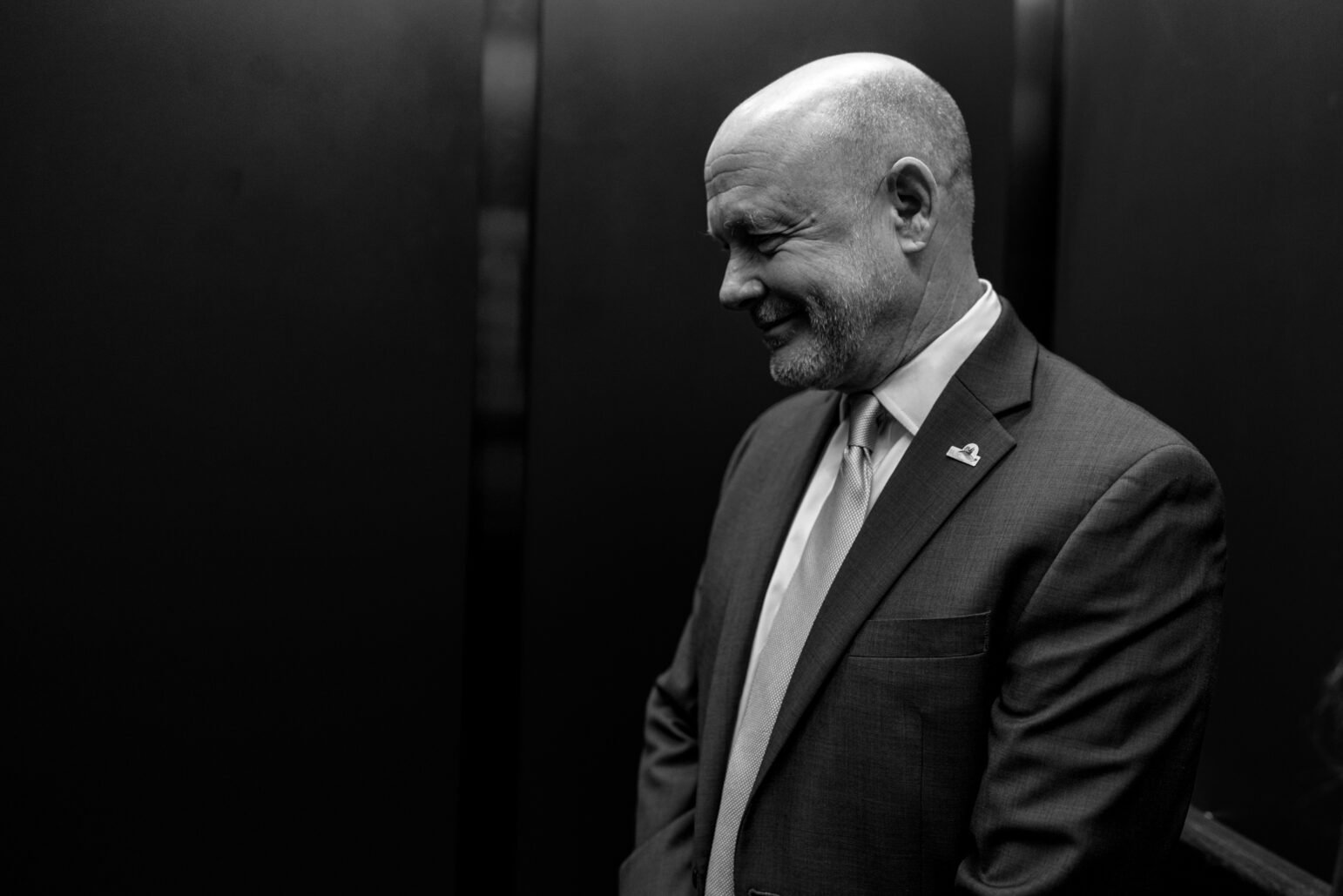
Do you bring any previous experience dealing with serious issues around policing in your prior roles before coming to Vallejo?
To a limited degree. Every city manager who oversees a police department has to deal with policing matters, police performance, service levels, police disciplinary matters. I worked for a long time for the City and County of San Francisco in a unit that worked with different departments to improve their performance. While I was there we worked on a very large initiative called the Police Effectiveness Review with the Police Executive Research Forum, that was really a top-to-bottom look at the San Francisco Police Department, so I was somewhat involved in that. So have been working on certainly all sorts of best practices and public policy issues for 25 years, some of them involving policing, so I feel pretty fluent in policing matters, public policy matters, personnel matters, all of those things.
Coming into this city with such a long history of issues and violence in the police department, what do you plan to do differently to hold the department accountable for things that have happened in the past, that are happening now, and anything that happens in the future?
I think the settlement agreement and the collaborative reform effort have charted a very thoughtful and aggressive, ambitious course. I think if the city continues to implement those requirements, we’ll be setting ourselves on a path for success regarding our policing activities. I think we can rely on that as a roadmap. Their agreement covers all sorts of different activities from use of force, to accountability, community engagement, so it covers everything that the police department is working on essentially, and as long as we’re making progress on those smart and worthwhile requirements, we’re moving the police department in the right direction.
How important is the reform effort in your decision on a new police chief and that person’s ability to succeed in the agreement and implementing those reforms?
Absolutely critical. I wouldn’t hire a police chief that I didn’t think was capable of succeeding in the reform efforts. That’s fundamental to the success of the police department, and by association, the success of the city. Public safety is a necessary condition for us to achieve all of the things we want for the city. We absolutely must achieve that.
One of the biggest things that has really rocked the city was the badge-bending allegations that came out a few years ago. We know there was an outside investigation commissioned by Vallejo, but the city has not released it to the public. Would you consider, for transparency’s sake, putting it out at some point?
I’m aware of the allegations. First, let me say that I’m grateful that California has the highest standards for police officer behavior in the nation, so I’m fortunate to be a resident of this state, and I’m grateful on behalf of our residents that California has such high standards. I have a high degree of confidence in the many different systems that are in place to perform oversight of police officers’ actions, including the court system, our POST standards, and the like. I’m confident that those will adjudicate any issues of officer behavior.
The issue of how to strike the right balance between protecting individuals’ personnel information, privacy, and the city’s risk exposure, are matters that I discuss with the city attorney, and so I’m not intending to take any new course at this point.
Police staffing is the next thing I wanted to ask you about. As you know, it’s a state of emergency that was declared by the city council last year. Just over half of the department’s allocated positions are currently filled. I know the Governor just signed legislation that would let retirees come back to the Solano County Sheriff’s Office to hopefully alleviate the issue. What do you think is contributing to the low staffing in the police department here? Any there any other strategies or paths the city is going to consider to increase staffing?
I think there are a lot of factors that are contributing to it. There’s been an exodus from the police profession. I think there’s also coincidentally, and maybe unrelated, a retirement tsunami just based on the age of the policing workforce. Most if not all cities are dealing with staffing challenges in their police departments, so I think those are the main drivers.
We’re exploring a number of different strategies, both for building our staffing long-term as well as near-term solutions. We’re meeting and conferring with VPOA on a recruitment and retention bonus incentive program, which we’re hoping to finalize and be able to have city council approve soon, which would provide an incentive to existing officers that have been here and stayed longer, as well as a bonus to new employees that sign onto the department.
At tonight’s council meeting, we’re asking the city council to approve a contract for a recruiting firm that will help supplement our normal police department and city HR staff in following up with promising candidates in a really expeditious way.
And then we’re exploring a number of strategies for short term solutions. We continue to be in conversations with the county about the sheriff’s office agreement. We’re talking about what that agreement might look like and seeing if we can come to terms. We have been trying to schedule a meeting with the Governor to ask for state assistance from the CHP, as well as on some other community issues, including some of our work with CalTrans and on homelessness.
We did issue a Request for Proposals for private security firms, that would simply be additional sets of eyes and ears out in the community. We’re completing our review of the proposals and are expecting to bring a contract to the city council probably in November to bring on some private security guards.
So we’re exploring a number of different things to close the gap on a short term basis as well as get some new permanent employees in the door and retain our existing permanent employees.
Would those private security be armed or unarmed?
It hasn’t been finalized, but we’re thinking unarmed. We’re thinking that they’d really be an extra set of eyes and ears in locations around the city that might be crime hot spots, where it would be useful to have someone who is just there, might identify any wrongdoing that is occurring and they would just pick up the phone and call the police department. So it’s additional surveillance, it’s not enforcement, they wouldn’t be probably proactively engaging with people who they thought might be engaged in wrongdoing. They’re really just there in a surveillance capacity.
Would the recruitment and retention bonus be competitive with other nearby cities?
The range is really quite varied. And different cities have pretty significant difference in their ability to pay, so we would try to make it competitive. My sense is it wouldn’t be near the top range, but I think it would be enough to get at least a handful of officers back. Given our situation, having five new lateral employees would be a significant number.
Open Vallejo recently published a story on the relationship between the low staffing and the police department’s response times, and found in the data that the numbers were just really, really slow, really dragging, especially for lower-priority incidents. Do you recognize that as an issue for the community? What would you say to people who are calling the police and no one’s showing up for five, six hours?
It’s absolutely a significant concern. We’re not providing the service levels that I think we want to provide or that the community deserves, which is why I think we’re pursuing so many different avenues to try and get some near-term help and some longer-term help.
Fortunately, the police department presents regularly to the city council on the staffing situation. Our total staffing numbers are increasing modestly, but we’re heading in the right direction. The police department has created a forecast of when we’re going to achieve certain staffing levels, and what that will mean in terms of the resources that we can deploy.
A significant milestone that we are looking forward to is by next summer, we’re expecting to have enough sworn staff to reinstitute or reconstitute what they call a problem-oriented policing, POP team, which is basically a special team that can go work on specific criminal activities in the community like prostitution or drug dealing. It would be a special tactical team that could work on special cases, whereas right now we really don’t have the bandwidth to stand up a sting operation. So there is a light at the end of the tunnel, but I think everybody recognizes that the current situation is very, very undesirable.
There have been 19 homicides so far this year. For comparison, there were 12 homicides in all of 2019. What do you think is driving this increase? Are there any things you’d like to do to combat gun violence and address public safety issues?
I think the norm has been for many years — obviously one homicide is one more than any community should have to endure — has been in the 20s. So we might be trending a little higher than that historical average, which is unfortunate. I’m really grateful, I think one particular shining aspect of the Vallejo Police Department, is its effectiveness in making arrests related to homicides. It has a very high clearance rate on those, so kudos to our officers and detectives who are working on those.
All sorts of things can influence homicides. There is a seasonality to it. A single incident can spiral into — and it doesn’t even have to be an incident of violence, between members of the community, could be something less significant than that — can lead to a homicide, that can lead to multiple retaliatory homicides.
The city is exploring and has been engaging in a number of different projects and initiatives to work on those. We engage with community organizations to try and keep the peace among different members of the community who might have adversarial relationships. One of the priorities of the city council is youth development, so we’re also trying to start way upstream on working with our youth to give them productive activities to engage in and opportunities to develop so they can be successful members of our community.
When we get more fully staffed again, we’ll again ramp up some of our community engagement programs, that I think also can be very successful in helping keep at-risk youth on a productive and safe path. So I think there will be more to come when we get back to our higher staffing numbers.
It’s obviously a very challenging issue and there are a lot of factors that contribute to individuals finding themselves in circumstances that might result in gun violence. There are a lot of different ways to try and address it and we’re trying to be creative about that.
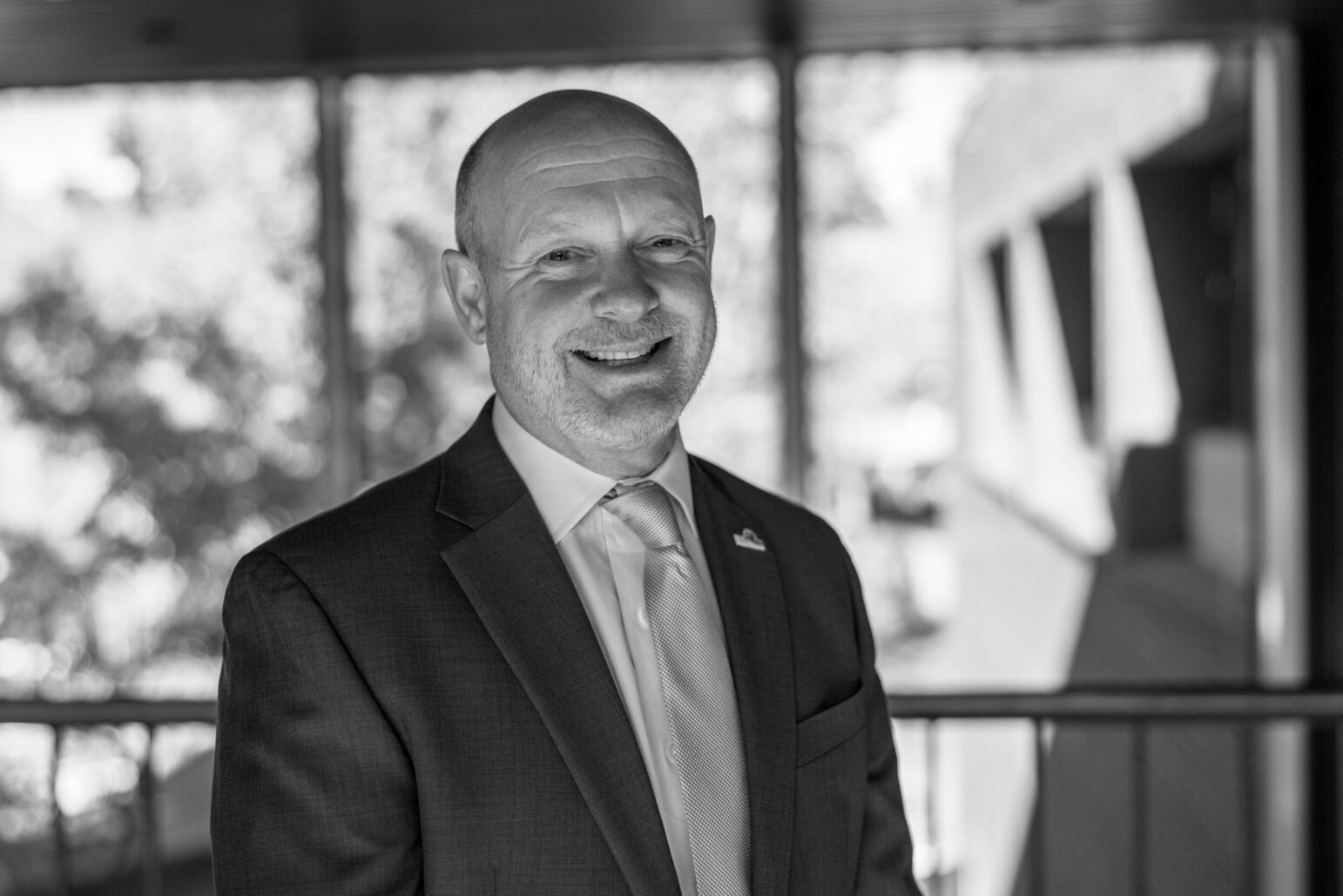
Why did you want to work in a place like Vallejo?
I think it has a lot of opportunity. I like the diversity, and just the culture and the vibe of the residents. As you know, Vallejoans recognize the challenges and are advocates for what they think they deserve and is fair, but are also, many of them really, really love this community and have found something here that they weren’t able to find somewhere else. And that story I think is very exciting.
From my public service perspective, I would be happy doing public service in a lot of different places, but for a diverse community that faces a lot of challenges, it’s more rewarding and interesting work for me. It’s also a size and complexity that I find professionally interesting and challenging. It’s a full-service city, it’s in a really interesting location that has a lot of opportunity, it’s got a great history, and it’s got great community members.
Do you live here in Vallejo?
I don’t. We’re all deeply ensconced in the community in which we live. I live in Berkeley, where I’ve lived since relocating from Ann Arbor, Michigan, 25 years ago or so, and coincidentally my wife and I both got jobs unrelated in Berkeley when we were relocating. We set up there, and now we’ve got four school-aged kids who are all, they’re not really chained in, but they’re entwined in their school activities and other community things.
One thing that has really left an impression on me is hearing from so many community members about what brought them here. If I had known their stories when I was considering where I might locate, there are a lot of appealing things about it.
What do you see as your vision for Vallejo in say, two to five years from now? What kind of community do you want this to be? What changes would you like to see implemented?
The thing that I get to help control as the city manager is having a high-performing city organization. So I want the city departments all to be efficient, effective, to do their work equitably, and for us to be providing good advice to the city council on policies that are going to help move the city in a positive direction.
I want for the city what everybody wants for the city, which is a safe, vibrant, healthy, inclusive, prosperous community. If you were to go anywhere in the country, that is what folks would want, but it looks different in different communities. Different communities have different visions for what that looks like, but those are really my priorities.
The city can play a pretty significant role, particularly in some of those things. The levers of city government don’t get to have that much influence on all of those things, but for a lot of them, they do. And the city council’s key priorities map to those well: public safety, economic development, infrastructure, and cleanliness. The key priorities of the city council are going to help us to get to that vision, of prosperity, vibrancy, inclusiveness.

